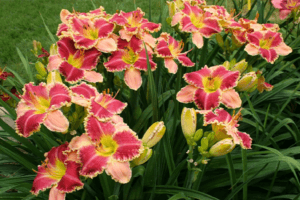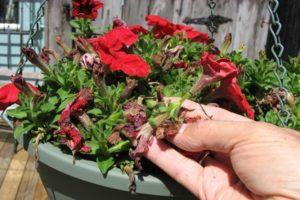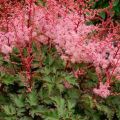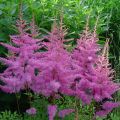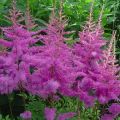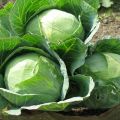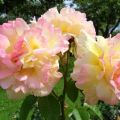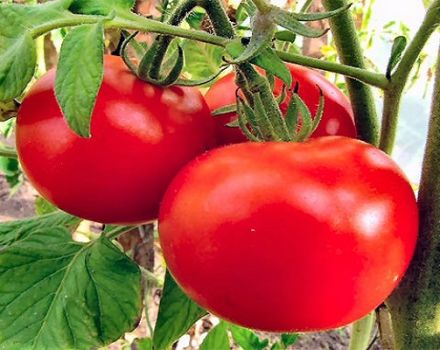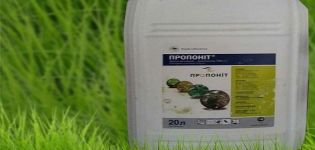Characteristics and description of the Weiss Gloria astilba variety, planting and care
Astilba is an unusual, graceful and spectacular perennial ornamental plant. It is distinguished by interesting carved leaves and large, bright, conical panicles consisting of hundreds of delicate flowers. The culture is widely used in landscape design. Astilbe called Weiss Gloria, which is an outstanding representative of its species, is no exception.
Breeding history
On the basis of 40 known species of astilbe growing in the wild, about 300 varieties have been bred. Astilba Weiss, or White, Gloria belongs to the Astilbe Arends. Obtained as a result of intraspecific crossing of Astilbe x arendsii Weisse Gloria.
Botanical description and characteristics of the plant
The homeland of Astilbe is the United States and East Asia, less commonly found on the Kuril Islands. More than 40 species of these plants are known. Astilba Weiss Gloria is a perennial plant with a beautiful and abundant flowering, intended for growing in a shady garden. The bush has good vigor, the shoots are thin, but strong, resilient, numerous.
The width of the plant is 40-50 centimeters, the height is 65-75 centimeters. In the spring, the leaves are painted in a light greenish color, in the summer they become shiny, juicy, dark green, with brownish edges. Inflorescences are numerous, diamond-shaped, large and dense. Astilba flowers are small, delicate, creamy white, sometimes with a faint yellowish tinge.
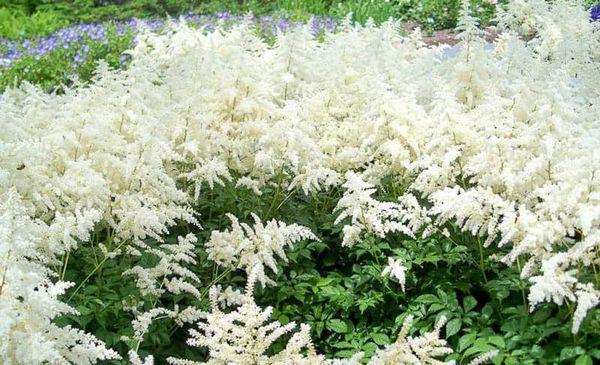
The diameter of the inflorescences is generally 10-12 centimeters, and the length is 20-25 centimeters. Weiss Gloria blooms in mid-July and continues to delight gardeners with flowers for 3 weeks. Moreover, the plant stands out not only for its abundant and spectacular flowering, but also for decorative, carved leaves.
Benefits of application in landscaping
Astilbes are planted both in groups and as single plants. In landscape design, a combination of various varieties, colors and sizes is widely used. Astilba will easily fit into a flower garden - both in the foreground and in the background, it will brightly decorate an alpine slide.
An effective and beneficial way for plants is to plant them near a pool or pond, along the edges of garden paths. Astilbe is irreplaceable as an original, flowering hedge or as a way to hide unsightly places on the site.
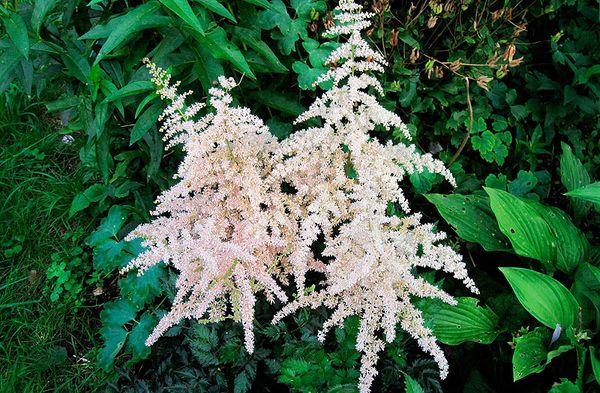
Combination with other plants
Weiss Gloria is used as a solitary plant (tapeworm) and in a wide variety of garden compositions with other plants. Looks great in combination with conifers, hosts, brunners, ferns, irises and badan. Effectively contrasts with the bright varieties of Heucher.
Requirements for growing conditions
Weiss Gloria prefers cultivation in partial shade or artificial shading during hot times of the day. The soil should be sufficiently rich, moist, with a neutral acidity index. With a combination of such negative factors as poor, dry soil and constant open sun, the plant will quickly die.
Terms and technology of planting works
Astilba is planted in open ground in early spring or early autumn. Closed root seedlings can be planted throughout the horticultural season.

Sowing crop seeds
An important condition for seed germination is stratification. To do this, take bowls, fill them with a substrate consisting of peat and sand in a 1: 1 ratio. You need to be careful - astilba has very small seeds, they are easy to deeply burrow into the substrate. For convenience, the seeds are mixed with clean, dry sand before sowing. Seeds are scattered over the surface and gently sprayed with a spray bottle.
Then the bowl is covered with foil or glass and removed for 3 weeks on the lower shelf of the refrigerator. After stratification, the dishes with seeds are placed in a room with a temperature of +20 C ... +22 C degrees. After 3-5 days, the whole bowl seems to bristle, the surface of the substrate is covered with thin, hair-like, green sprouts.
Planting astilba in the ground
When several true leaves appear, the seedlings dive directly into the open ground. Semi-shady places are chosen for landing. At first, seedlings need artificial shading and protection from the wind. This will help installing arcs and pulling white agrofibre on them.

Before landing, the following activities are carried out:
- The planting site is weeded, dug deeply, organic matter (rotted manure, compost) is introduced in an amount of up to 2 buckets per 1 square meter and spilled well with water.
- Landing pits are prepared with a depth of 20-30 centimeters. The distance between the holes is maintained at least 30-40 centimeters.
- Before planting, add a teaspoon of complex granular fertilizers and a few tablespoons of wood ash to the holes. Then everything is thoroughly mixed and spilled with water.
- When planting, the seedlings are buried so that the growth buds are 4-5 centimeters below the soil level. After planting, the soil is slightly compacted, mulched and well spilled with water.
How to care for a flower
Astilba is not a capricious culture, but it also requires careful care and has its own nuances in agricultural technology. In particular, regular watering and feeding with phosphorus-potassium fertilizers are important.
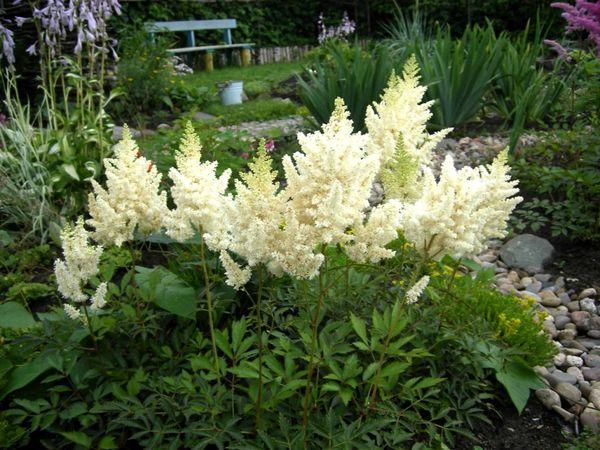
Regularity of watering
The most important condition for growing astilba is the regular supply of plants with moisture. It absolutely does not tolerate long-term drought, the soil must be constantly moist. In nature, it grows even on swampy soils. If Weiss Gloria is planted in a sunny place, in a hot, dry period, watered twice a day - in the morning and in the evening.
When grown in the shade, they carry out regular, maintaining soil moisture, preventing it from completely drying out. The gardener needs to work out an irrigation schedule himself, based on weather conditions and soil type. Astilbe is especially demanding for watering during regrowth of peduncles and during flowering.
How and what to feed
For a beautiful and lush flowering, astilbe requires, in addition to nutritious soil, full and regular fertilization. In the spring, during the beginning of the growing season, fertilizers with a high nitrogen content are applied for the growth of green mass.
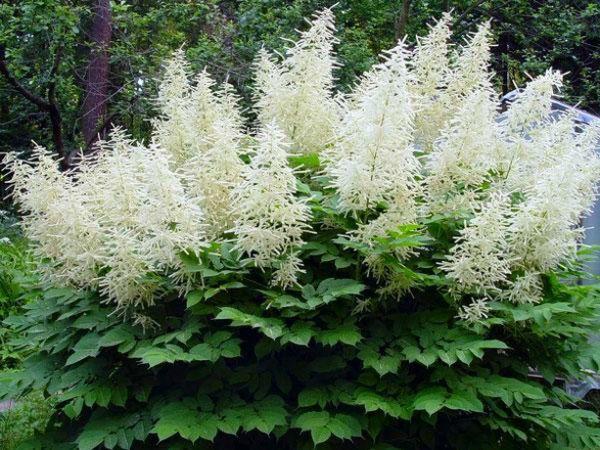
Then a few more dressings are carried out, but already with complex phosphorus-potassium fertilizers. One - just before flowering, and the second - during it. It is advisable to apply complex fertilizers in the fall, when preparing the plant for wintering.
Protection against insects and diseases
Astilba, despite its refinement and decorativeness, is resistant to various diseases and pests. But with a low agricultural background on the site or the purchase of already infected seedlings, astilba is affected by strawberry and rootworm nematodes. This is the most dangerous, but rare pest, which is very difficult to fight. They use drugs like Nurell D, in high concentration, or a novelty - the biological product Nematofagin.
Before processing, remove all affected parts of the plant, and in case of severe damage, get rid of the entire bush. Astilbe and penny drool are affected, but it is much easier to deal with it. A couple of treatments with Inta-vir insecticides will help. In high humidity, slugs often appear. To combat them, use beer traps or collect pests by hand.
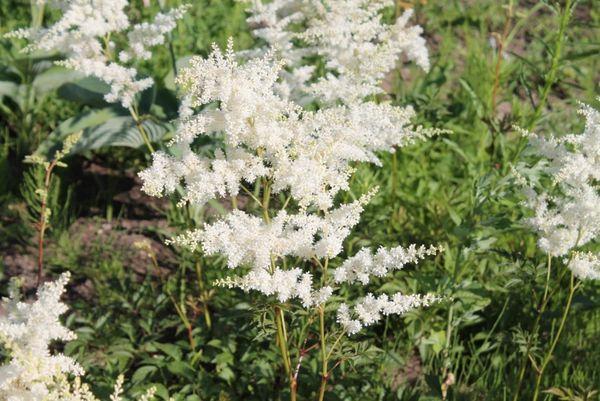
In constant humidity and cool weather, astilbe is affected by root rot. It is especially dangerous for young plants - the disease can lead to their death. Control measures - removal of decayed and diseased roots, followed by soaking the root in a fungicide solution, for example Fundazol. With bacterial spotting (dark spots on the leaves), several treatments with copper-containing preparations are carried out.
Bush crown formation
A big plus of astilba is that the plant itself forms a crown, without the help of a gardener. It is only necessary to carry out sanitary cleaning, removing all dried shoots, leaves and wilting flower stalks, preventing them from weakening the plant.
Pruning consists of several steps:
- after flowering, thoroughly remove all peduncles;
- carrying out a complete pruning of shoots in the fall, after the arrival of frost, as in the case of remontant raspberries;
- it is possible to leave shoots for the winter to keep the snow cover. This further protects the root system. In the spring, after the appearance of new shoots, the old ones are cut out to zero.
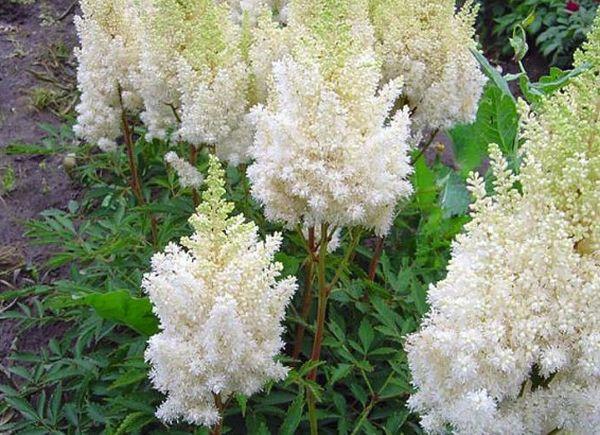
Transfer
Astilba grows in one place for up to 20 years, but over time, its beauty fades. To maintain decorative qualities, the bush is divided and transplanted every 4-5 years. The start of work depends on the strength of the growth of the variety and the conditions created.
Signs of the need for a transplant are a decrease in the duration and splendor of flowering, crushing of inflorescences, as well as the growth of roots at the surface of the soil.
In this case, the old astilba is dug up in early spring, carefully divided into several parts, with at least one developed root bud, and planted in a new place.
Do I need to cover plants for the winter?
Astilba is a frost-resistant plant. Only young plants of the first year of planting and old bushes, in which the roots are above the surface, are subject to freezing. To protect against frost, a 15-20 cm layer of mulch is enough, no more shelter is required.
Breeding features of Astilbe Weiss Gloria
When astilba reproduces by seeds, all the signs of the mother plant are not preserved, they are split. Effective methods of propagation, while maintaining the grade - dividing the bush and green cuttings.
